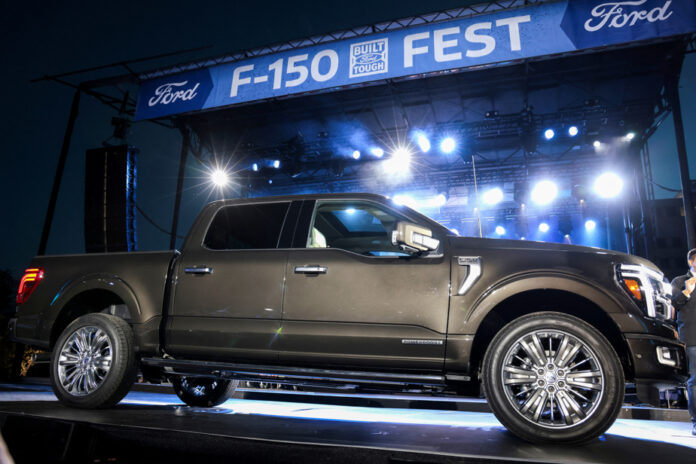(Detroit) The Detroit auto show opens its doors on Wednesday with a day reserved for the press, but everyone’s attention remains focused on the negotiations between manufacturers and the union, with the threat of a strike growing stronger and stronger.
The gathering traditionally offers the opportunity to discover the latest creations, in particular those of the three major American manufacturers from this large city in Michigan (northern United States).
But this year he finds himself in the background because of a crucial deadline Thursday evening at midnight: the expiration of the collective agreements at Ford, General Motors and Stellantis.
Negotiations with the United Auto Workers (UAW) union began several months ago, under the leadership of its new president Shawn Fain, who appears to be quite intransigent.
In particular, it is demanding significant salary increases for its approximately 150,000 members in the three groups in view of record profits, loudly warning of the risk of a work stoppage at the three manufacturers in the absence of a satisfactory agreement.
Mr. Fain acknowledged in recent days that the manufacturers had begun serious discussions, criticizing them for waiting until they were so close to the deadline.
Both camps have made “a little progress,” he said Monday evening on CNN. “It’s still slow, but we’re moving.”
A feeling shared by Ford boss Jim Farley, who said Tuesday evening he was optimistic about the possibility of an agreement within 48 hours.
During a press briefing on the sidelines of an event in Detroit, he indicated that Ford made a third offer to the UAW on Tuesday, the “most generous” in 80 years of collaboration between the manufacturer and the union.
It includes salary increases, inflation protection measures, 17 days of paid vacation and higher retirement contributions.
Farley stressed, however, that there are limits to what the manufacturer can accept, mentioning the 32-hour or four-day week, for “the viability of the business.”
“We are absolutely ready for a strike and I know the UAW is too, but we don’t want it to happen,” he added.
The economic consequences of a strike, if it occurs, will depend on its scale and duration.
In the worst-case scenario, i.e. all three groups are affected over a long period, household consumption would suffer and layoffs at manufacturers’ suppliers could ensue, according to industry experts.
The North American International Auto Show in Detroit was previously held in January, but has changed seasons to 2022, shifting its focus to the general public.
Ford kicked off Tuesday evening with a new version of its F-150 pickup truck, the best-selling vehicle in the United States for several decades. A real party with performances, including that of country singer Darius Rucker.
GM and Stellantis each have scheduled presentations Wednesday morning at Huntington Place, a conference center in downtown Detroit.
But professionals focus more on union discussions than on what happens in the aisles of the show.
In a note published Monday, JPMorgan Chase analysts considered the risk of a strike “high”, given the persistent gap between union demands and the positions of the three manufacturers.
They noted the UAW’s desire to “recover the purchasing power lost to inflation, at levels well above what was envisaged in 2019” during the last renewal of collective agreements, and to “protect » salaries in the event of future increases in the cost of living.
Mr Fain called for pay rises of 40%, the same size as those granted to executives in recent years. He also advocates for job security during the transition to electric vehicles, the elimination of different salary scales and better conditions for retirees.
The manufacturers have proposed at this stage between 10 and 14.5% wage increases, offers described as “insulting” by the unionist.
For some observers, like Harry Katz, a professor at Cornell University’s School of Industrial and Labor Relations, his posture may be nothing more than a “theatrical” negotiation strategy.
But on the ground, workers began to organize: The UAW branch at the Ford pickup plant in Dearborn, Michigan, assigned roles for the first seven days of a work stoppage.
Picketing guidelines instruct employees to “peacefully” patrol off factory grounds, not leave litter behind, and not bring in alcohol.















